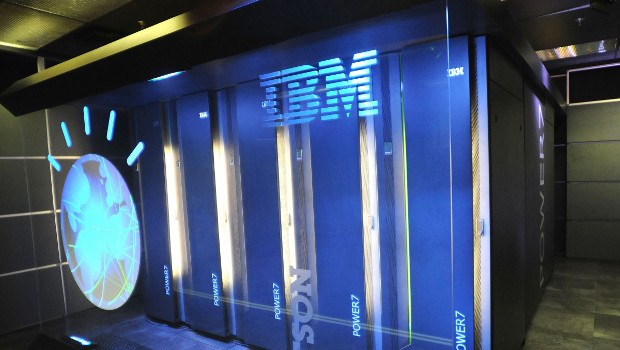In an ongoing effort to commercialise its Watson analysis technology, IBM is testing a new service that can answer questions business managers might have about their data.
IBM has launched a beta of Watson Analytics, an interactive Q&A service designed to answer questions and highlight trends within sets of enterprise data. The service “is about putting powerful analytics in the hands of every business user,” said Eric Sall, IBM vice president of marketing for business analytics.
Traditional business intelligence tools remain too difficult to use for business managers, Sall said. “It is hard to get the data. It is hard to analyse the data if you are not a specialist, and it is hard to use the tools,” he said. Watson Analytics attempts to streamline the process.
Natural language systems are becoming increasingly prevalent as a form of human-computer interface. Apple’s Siri, Google’s GoogleNow and Microsoft’s Cortana all act as virtualised personal assistants, able to answer a range of simple questions on behalf of their users.
Watson Analytics operates in a similar manner, in that it can offer responses to questions posed by the user in their chosen language, rather than forcing the user to develop a SQL query, master a complex statistical package or write data-parsing code to better understand some large set of data.
The effort is the latest move in IBM’s $1 billion (€770 million) initiative to commercialise Watson technologies.
Natural language
IBM Research developed Watson to compete with human contestants on the “Jeopardy” game show in 2011, using natural language processing and analytics, as well as many sources of structured and unstructured data, to formulate responses to the show’s questions.
In the years since, the company has been working to commercialise the Watson technology by identifying industries that could benefit from this form of cognitive computing, such as health care, law enforcement and finance.
Earlier this year, IBM launched the Watson Discovery Advisor, which is customised for scientific researchers who need to deeply probe one specific body of scientific knowledge, such as chemistry or cellular biology.
Another service, the company’s Watson Engagement Advisor, uses the artificial intelligence technology to aid in customer support.
Watson Analytics is aimed more to answer more general questions for the average business manager. The technology would be a good fit for those working in the marketing, sales, operations, finance and human resources professions, according to IBM.
The service is aimed at business users who now do most of their analysis on spreadsheets, or use traditional business intelligence tools.
A sales manager could determine, for instance, which pending deals are most likely to close. A human resources manager could investigate which benefits are most likely to keep employees from job hunting elsewhere.
Task streamlining
The service streamlines a lot of the tasks typically associated with predictive analytics, noted Dan Vesset, who is the program vice president for business analytics at the IDC IT research firm.
For instance, Watson Analytics can clean a new data set, which is to say the service organises and formats the data so it can be analysed. This can be a cumbersome job to do by hand. IBM estimates that data preparation can take up to 60% of the time required for an analysis job.
IBM is expecting most of the user data will arrive in a structured format, as database tables. The company is working on connectors for piping in semi-structured data, such as data from other applications and services like Salesforce.com, Sall said.
The service can also examine a data set to determine which statistical algorithms and visualisation would work best for that data, relieving the user from making such technical decisions, Vesset said.
“I think IBM is bringing together a lot of important components,” Vesset said, referring to how the service combines natural language processing, machine learning, cognitive reasoning, data cleansing and formatting, preparatory analysis and visualisation.
“Instead of dragging and dropping a pie chart, you write in natural language what you’d like to see, and the system itself will provide what it reasons is the most appropriate visualisation,” Vesset said.
User base
IBM’s next step, Vesset said, is to find the right user base for this service. The company is not pitching Watson Analytics to IT managers, but rather to line of business managers, who all have very specific domain knowledge about their businesses, which IBM and its partners will need to understand closely to make Watson a fit, he said.
IBM also has a range of more traditional analysis software and services, such as the Cognos Business Intelligence Suite and Statistical Package for the Social Sciences (SPSS).
IBM will choose which applicants can try the beta. In November, the service will go live.
The pricing structure for Watson Analytics not been announced yet, though the company plans to offer free use of the service for light, exploratory tasks, and offer paid plans for larger-scale usage.
IBM plans to demonstrate how the technology works in more detail, in an event to be held in New York next week.
Joab Jackson, IDG News Service







Subscribers 0
Fans 0
Followers 0
Followers